
10 Key Insights on Newfoundland Dog Size for Busy Owners
Overview
For busy dog owners, the journey of caring for a Newfoundland can feel overwhelming at times. These gentle giants typically reach their full size between 18 to 24 months, with males weighing between 130 to 150 pounds and females from 100 to 120 pounds. Understanding their growth is crucial, as it allows you to provide the tailored care they need.
It’s essential to focus on their nutrition and ensure they receive regular veterinary check-ups. This not only supports their physical health but also strengthens the bond you share with your beloved pet.
By prioritizing their well-being, you can navigate the challenges of dog ownership with confidence, knowing you’re giving your Newfoundland the best life possible.
Introduction
Newfoundland dogs are cherished for their gentle demeanor and impressive size, making them a beloved choice among pet owners. For those considering welcoming one of these gentle giants into their home, understanding the intricacies of Newfoundland dog size is essential. This article gently explores key insights about their growth stages, health considerations, and the specialized care required for their unique needs.
How can busy owners ensure that their Newfoundland thrives while managing the challenges that come with such a large breed? By delving into these insights, you will be equipped with the knowledge to foster a healthy and fulfilling life for your furry companions.
Jet Pet Resort: Tailored Care for Newfoundland Dogs
At Jet Pet Resort, we understand the deep bond you share with your dog of Newfoundland dog size and the unique needs that come with it. Our luxurious facility is thoughtfully designed to provide spacious accommodations specifically for larger breeds, ensuring your furry friend enjoys ample comfort and play space. We know that as a pet owner, you prioritize exceptional care, which is why we offer a range of luxury dog boarding options, including the Grand Suite and Luxury Suite, each providing the ultimate in comfort and amenities. With pricing starting at $122.95 per night for the Grand Suite and $149 for the Luxury Suite, we strive to make your pet’s stay as enjoyable as possible.
Research shows that around 66% of pet owners seek accommodations tailored to their pets’ specific needs, especially for larger breeds like giant dogs, which includes considerations for Newfoundland dog size. Our dedicated team is highly skilled in understanding the temperament and requirements of these wonderful companions, including the Newfoundland dog size, which allows us to deliver tailored care that enhances their well-being. As Dr. Bernard Rollin wisely states, ‘Veterinarians don’t just treat animals, they treat the people who love them.’ This highlights the importance of recognizing both the pet and the owner in the pursuit of exceptional care.
With our focus on the Dog Purposeful approach, every detail of your dog’s stay is meticulously crafted to promote their happiness and comfort. We offer specialized play sessions designed for the energetic nature of certain breeds, featuring engaging activities like swimming and fetch. This ensures they receive the exercise and interaction they crave, making their stay truly fulfilling.
Our unwavering commitment to specialized care, combined with our luxurious accommodations and personalized pet care plans, positions Jet Pet Resort as the premier choice for busy pet owners seeking a nurturing environment for their beloved companions.
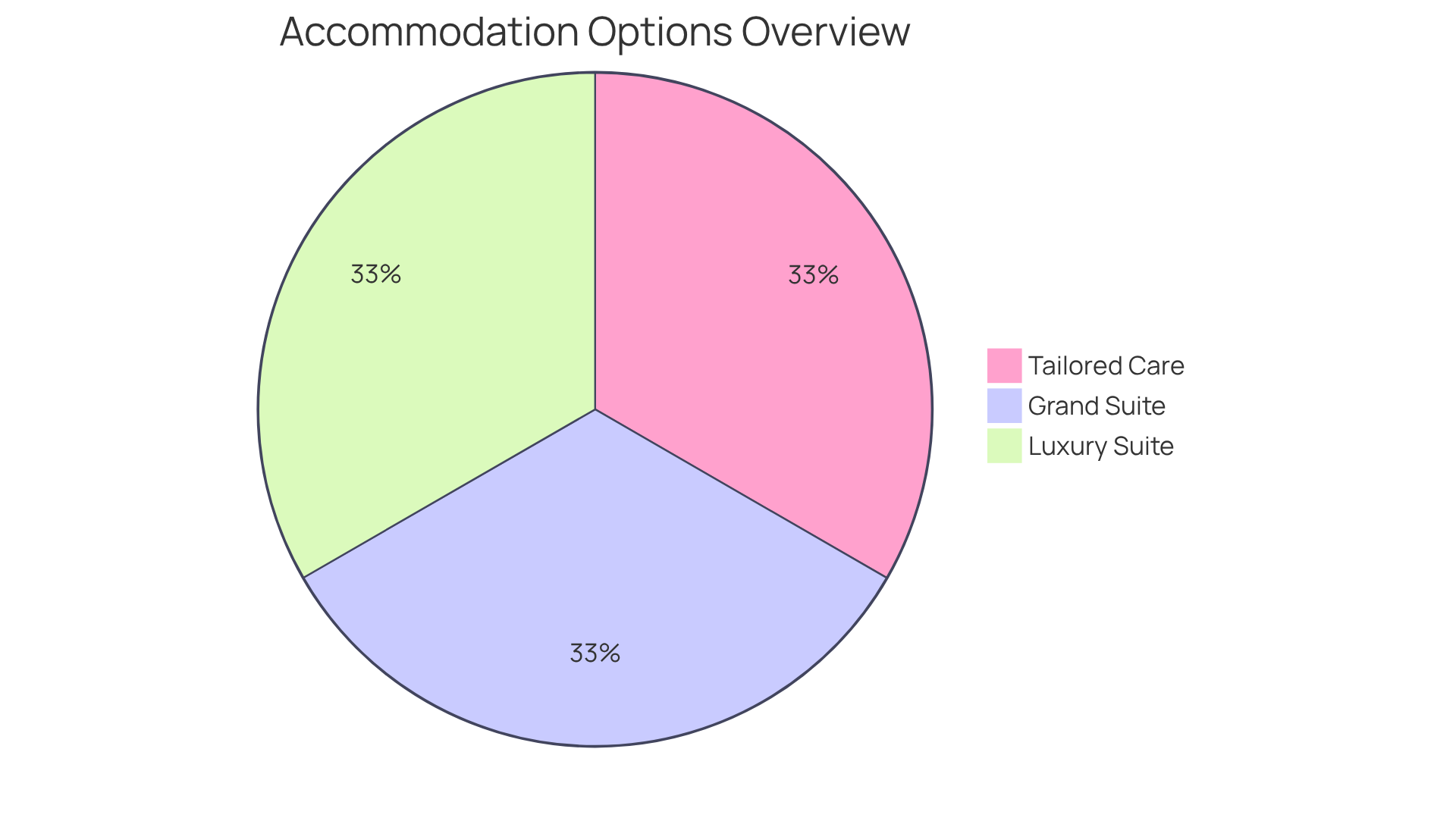
Growth Stages: When Does a Newfoundland Reach Full Size?
Dogs of this breed typically reach their full size, which is known as the newfoundland dog size, between 18 to 24 months, progressing through distinct growth phases: puppyhood, adolescence, and adulthood. During these critical stages, providing proper nutrition and exercise is essential for healthy development. For example, a 2-month-old Newfoundland puppy usually weighs between 15-20 pounds for females and 16-27 pounds for males. By 6 months, females can weigh around 58-73 pounds, while males may weigh 72-84 pounds. To support this growth, it’s important for owners to offer high-quality puppy food specifically formulated for giant breeds, ensuring portion control to prevent rapid growth that could lead to health concerns such as hip and elbow dysplasia, which significantly impacts the breed.
Exercise should be moderate and tailored to their age, with activities like supervised swimming being ideal for young dogs of this breed. It’s noteworthy that Newfoundlands do not require extensive exercise, making them a good fit for busy pet owners. As they mature, the newfoundland dog size for adult males typically ranges from 130-150 pounds and about 28 inches tall, while females weigh between 100-120 pounds and reach around 26 inches. Understanding these growth patterns helps owners prepare for their dog’s needs, ensuring a balanced lifestyle that promotes overall health.
Experts highlight the importance of addressing breed-specific needs during this growth period. A trainer notes that focusing on positive reinforcement and building a strong relationship is vital for raising a well-adjusted dog. Additionally, it is crucial to consider the potential costs of veterinary care, including surgeries for hip dysplasia, as part of financial planning. By being attentive to their nutritional and exercise requirements, as well as grooming needs, owners can support their dogs in thriving as they transition into adulthood.

Weight Expectations: Newfoundland Puppy Growth Chart
Newfoundland puppies experience remarkable growth during their early months, and it’s natural for owners to feel concerned about their development. At just 8 weeks, female Newfoundlands typically weigh between 15 to 20 units, while males range from 16 to 27 units. As they grow, by 6 months, their weight can increase significantly, with females weighing between 58 to 73 units and males between 72 to 84 units. By the time they celebrate their first birthday, the Newfoundland dog size may reach an impressive 80 to 100 pounds.
Understanding that Newfoundlands have a significant Newfoundland dog size as a giant breed, it’s important to recognize that they continue to grow until around two years of age. This ongoing growth makes regular weight checks essential for their health and well-being. Utilizing the Growth & Weight Chart specific to this breed can be a comforting tool for owners, allowing them to monitor their puppy’s progress and identify any potential concerns early on.
As Aliyah Diamond, a veterinary student with over ten years of experience, wisely notes, tracking a Newfoundland’s weight is crucial, as it can reflect their overall condition and well-being. This proactive approach ensures that owners can provide the best care for their growing companions, especially considering the breed’s increased risk of genetic issues such as hip dysplasia. By staying informed and attentive, you can nurture a healthy and happy life for your beloved Newfoundland.
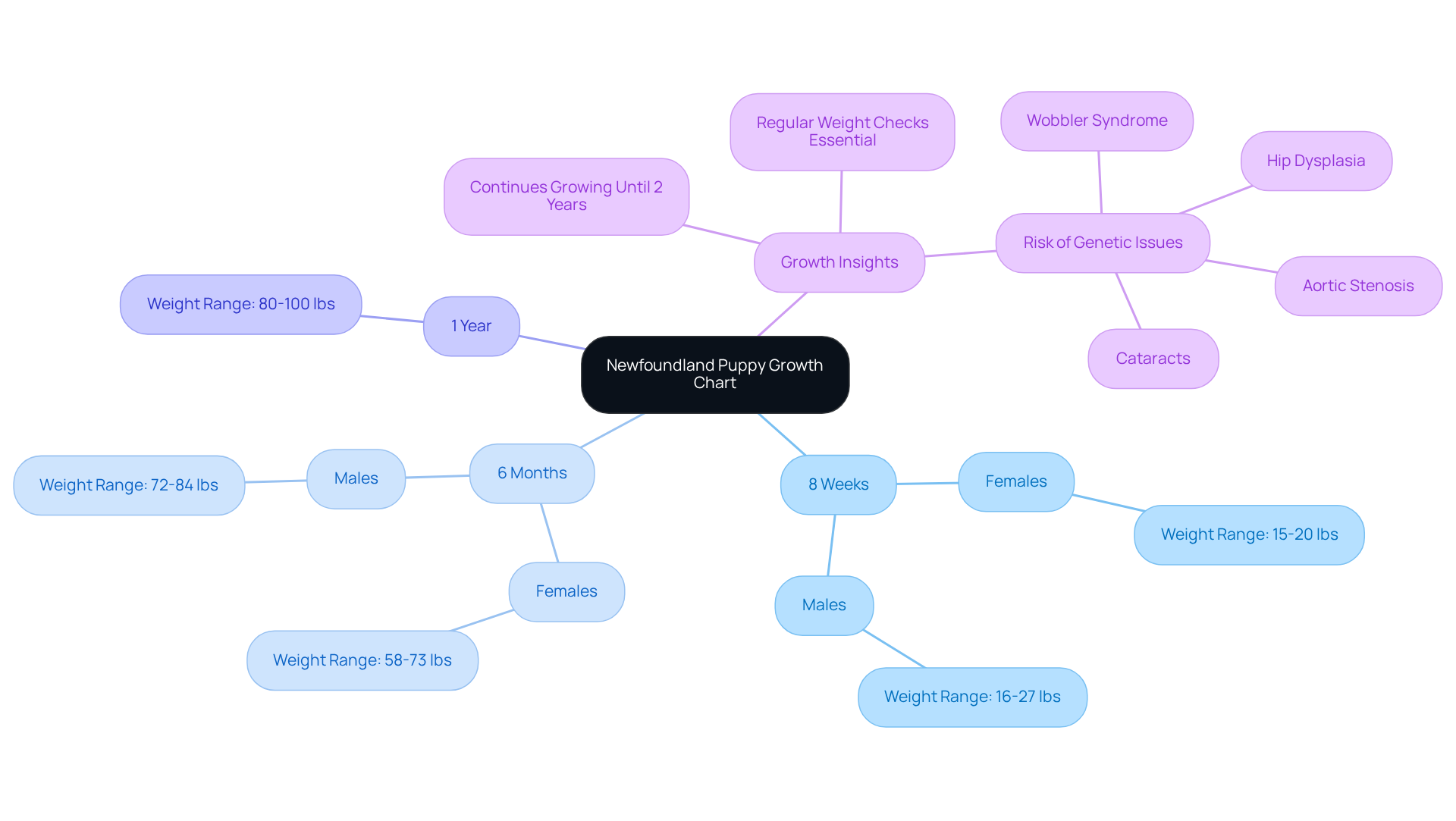
Health Considerations: Keeping Your Newfoundland Healthy
Newfoundlands are vulnerable to a range of medical issues, particularly hip dysplasia and heart disorders like Sub-Aortic Stenosis (SAS), a hereditary condition that affects the aortic valve of the heart. Understanding these challenges can be daunting, but regular veterinary check-ups are essential. Early detection can significantly improve outcomes. For instance, SAS can lead to exercise intolerance and even sudden death if left untreated. However, with proper medication management, affected dogs can enjoy a longer lifespan, and some studies suggest that they can experience an even greater lifespan through appropriate care.
A balanced diet tailored to their specific needs, along with regulated exercise, is crucial for maintaining their overall well-being. Preventive care strategies involve being vigilant for signs of common health issues, such as lethargy, difficulty rising, or changes in behavior, which may indicate underlying problems. Additionally, this breed is at risk for other medical concerns, including Cystinuria, Von Willebrand’s disease, and Cataracts, underscoring the importance of vigilance and proactive care.
Veterinarians emphasize the significance of spaying or neutering at the right time to mitigate health risks. Opinions differ between UK and U.S. veterinarians regarding the timing of spaying; some recommend pre-heat spaying to reduce the risk of mammary tumors, while others advocate for post-heat spaying to allow for hormonal maturity, which may lower the risk of joint disorders. It’s essential to weigh these benefits against the potential for increased risks of certain cancers, ensuring that decisions are made with care and consideration.
Statistics reveal that breeds with a Newfoundland dog size often face unique health challenges, including a genetic predisposition to cruciate ligament tears. This reality necessitates that owners stay informed and proactive about their pets’ health. By ensuring regular veterinary visits and adhering to preventive care guidelines, owners can help their beloved Newfoundlands lead healthy, fulfilling lives. Remember, you are not alone in this journey; there is a community of pet lovers who share your concerns and are here to support you.
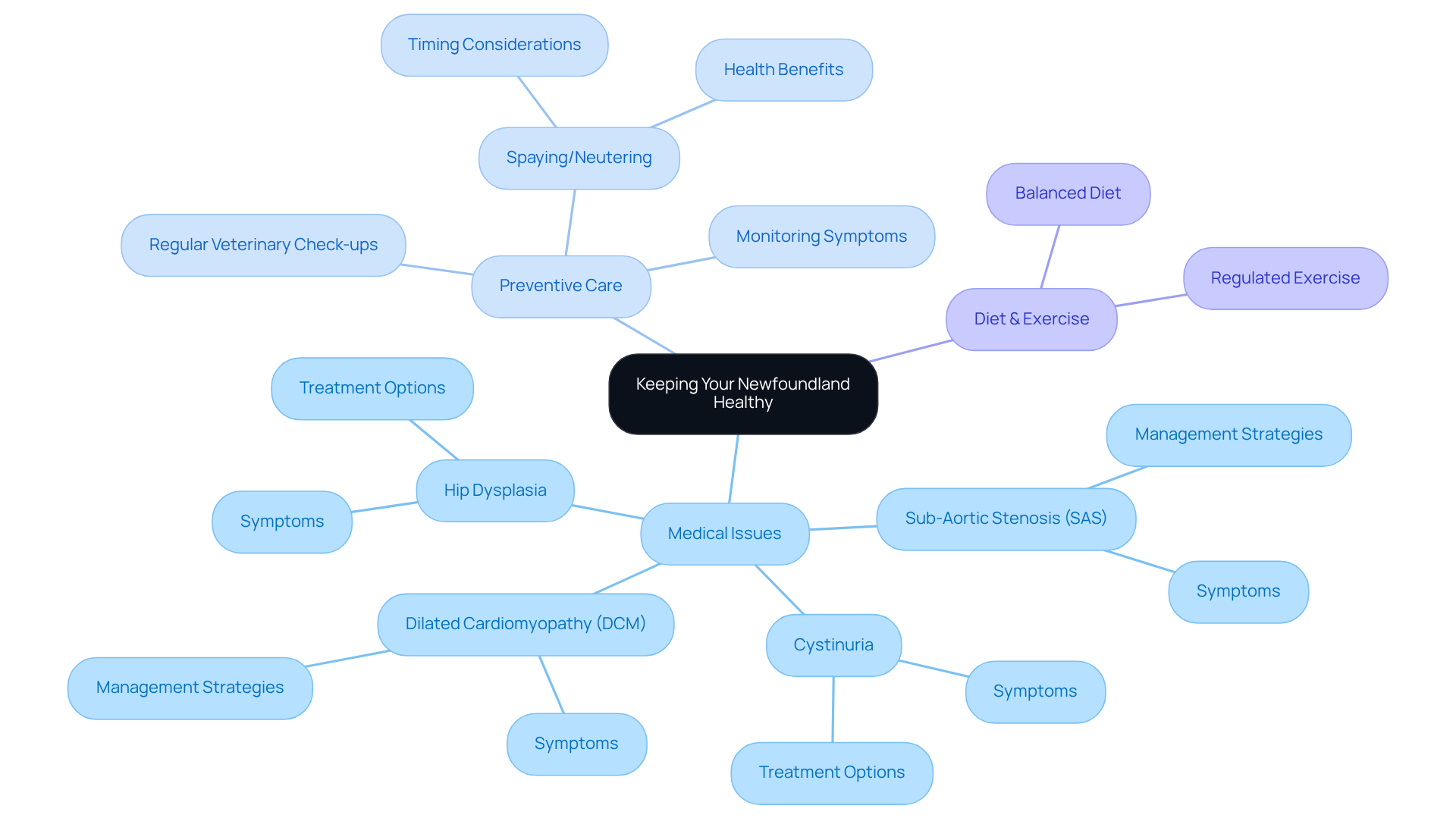
Adult Size: Understanding the Full-Grown Newfoundland
When considering welcoming a mature Newfoundland dog, it’s important to acknowledge the Newfoundland dog size and their substantial size. Typically, the Newfoundland dog size ranges from 100 to 150 pounds in weight and about 26 to 28 inches in height at the shoulder. The Newfoundland dog size shows that males usually weigh between 130 to 150 pounds and reach about 28 inches in height, while females generally weigh between 100 to 120 pounds and stand around 26 inches tall. The Newfoundland dog size means they require ample space to move and play, which can be a concern for many potential owners. It’s essential to evaluate your living arrangements before bringing a Newfoundland into your family.
These loving dogs thrive in environments that offer both indoor comfort and outdoor activity, ideally with access to a yard or nearby open spaces. As you consider your home, remember that providing adequate space not only supports their physical health but also contributes significantly to their overall happiness. Trainers often emphasize that a Newfoundland’s well-being is closely tied to their ability to engage in play and explore their surroundings. As one trainer wisely noted, “This breed requires space to move freely and engage in play, which is essential for their happiness and health.”
Ensuring that your living space meets a Newfoundland’s needs is vital for nurturing a happy and healthy companion. Additionally, it’s worth noting that Newfoundland dog size typically reaches its full extent by 24 months, with some continuing to fill out until they are three years old. By understanding and addressing their needs, you can create a loving environment where your Newfoundland can flourish.

Future Growth: How Much Bigger Will Your Newfoundland Get?
As your beloved Newfoundland matures, it’s important to recognize that the Newfoundland dog size can continue to increase and that these dogs may gain weight until they reach about 3 years of age. While their height typically stabilizes around 2 years, you can expect to see further increases in muscle mass and overall weight as they grow. For instance, the Newfoundland dog size shows that male Newfoundlands can weigh between 130 to 150 pounds, while females generally range from 100 to 120 pounds when fully grown, as noted by the American Kennel Club (AKC). Regularly monitoring their weight is essential, as Newfoundland puppies, which contribute to the Newfoundland dog size, can weigh between 60 to 85 pounds at 6 months old and may reach 73 to 87 pounds by that age.
To support your dog’s healthy growth, thoughtful adjustments to their diet and exercise are crucial. A balanced diet rich in high-quality protein, healthy fats, and complex carbohydrates is recommended, with adult Newfoundlands typically needing 3 to 4 cups of food each day. It’s vital to ensure that their diet remains high in protein (20-25%) to foster muscle development. Additionally, incorporating regular exercise, such as daily walks of at least 30-60 minutes and swimming sessions, helps maintain their physical condition and prevents obesity, a common concern for this breed.
Veterinarians emphasize that this breed should avoid intense exercise until they are fully matured to prevent joint issues. By monitoring their activity levels and adjusting their food intake accordingly, you can effectively manage their weight. By the time they reach maturity, the Newfoundland dog size should be well-proportioned, showcasing a strong build that reflects their heritage as working dogs, allowing you to take pride in their healthy development.

Veterinary Care: Essential for Your Newfoundland’s Well-Being
Caring for your beloved dog through regular veterinary care is truly essential. This encompasses not just vaccinations and dental hygiene, but also routine check-ups that can make a world of difference in their health. It’s important to establish a relationship with a veterinarian who has unique expertise in treating multiple species, as they are the only professionals authorized to prescribe medicine for various animals. This specialized training ensures that your veterinarian understands the distinct wellness needs of your dog’s breed.
Preventive care plays a vital role in early identification of potential medical concerns, and it contributes to a longer, healthier life for your furry friend. For large breeds, particularly those of Newfoundland dog size, specific preventive measures such as:
- Weight management
- Monitoring joint conditions
- Customized vaccination schedules
are crucial for their well-being. By prioritizing these aspects, you can help your dog thrive.
To maximize your dog’s health, consider scheduling regular check-ups and seeking out a veterinarian experienced in large breeds. This proactive approach not only reassures you but also fosters a nurturing environment for your pet, allowing you both to enjoy many happy moments together.
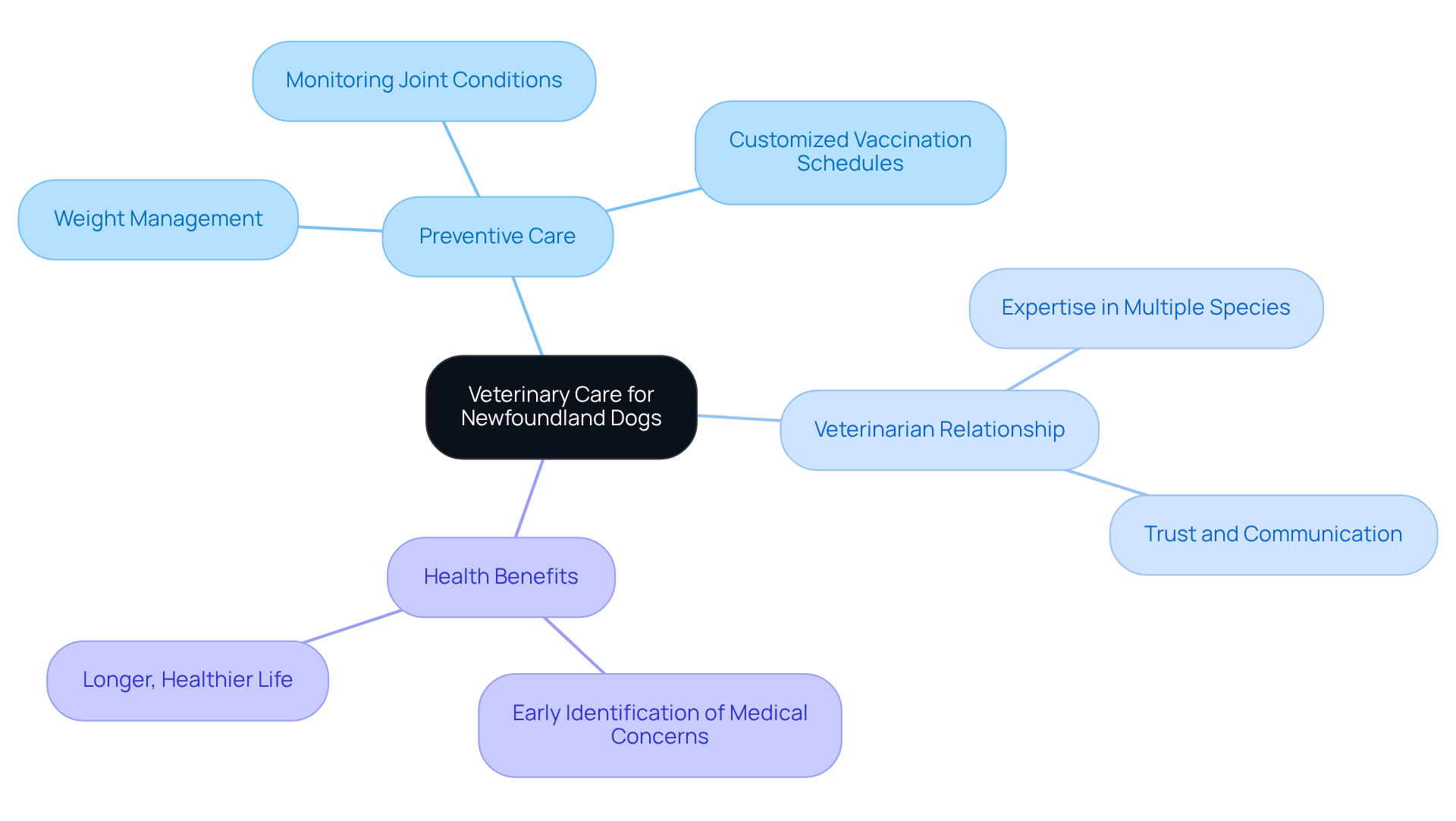
Key Takeaways: Essential Facts About Newfoundland Size
Caring for Newfoundland dogs is a journey filled with love and commitment, as these gentle giants require specialized care and attention throughout their lives. It’s essential to understand their growth stages; typically, Newfoundland dog size is reached around two years of age, with males weighing between 130 to 150 pounds and standing up to 28 inches tall. Regular veterinary check-ups are crucial, as they help monitor health issues common in the breed, such as:
- hip dysplasia
- cataracts
- heart conditions like subvalvular aortic stenosis
By prioritizing these visits, you can ensure your beloved companion remains healthy and happy.
Providing a balanced diet of 4 to 5 cups of high-quality dry food daily is vital to support their nutritional needs, especially during colder months when they may require extra calories to maintain their energy levels. Imagine how comforting it is to know that you are meeting their needs and keeping them strong and vibrant. Additionally, early socialization and training are essential for developing a well-rounded temperament, ensuring that Newfoundlands are friendly and adaptable. Your efforts in this area can foster a deep bond between you and your dog, filled with trust and affection.
Veterinarians emphasize the importance of understanding a dog’s unique needs, stating that proper care and attention can significantly enhance their quality of life. By embracing these essential care tips, you can create a nurturing environment that supports your Newfoundland’s well-being. Remember, you are not alone in this journey; the love and commitment you show will undoubtedly lead to a fulfilling companionship that enriches both your lives.
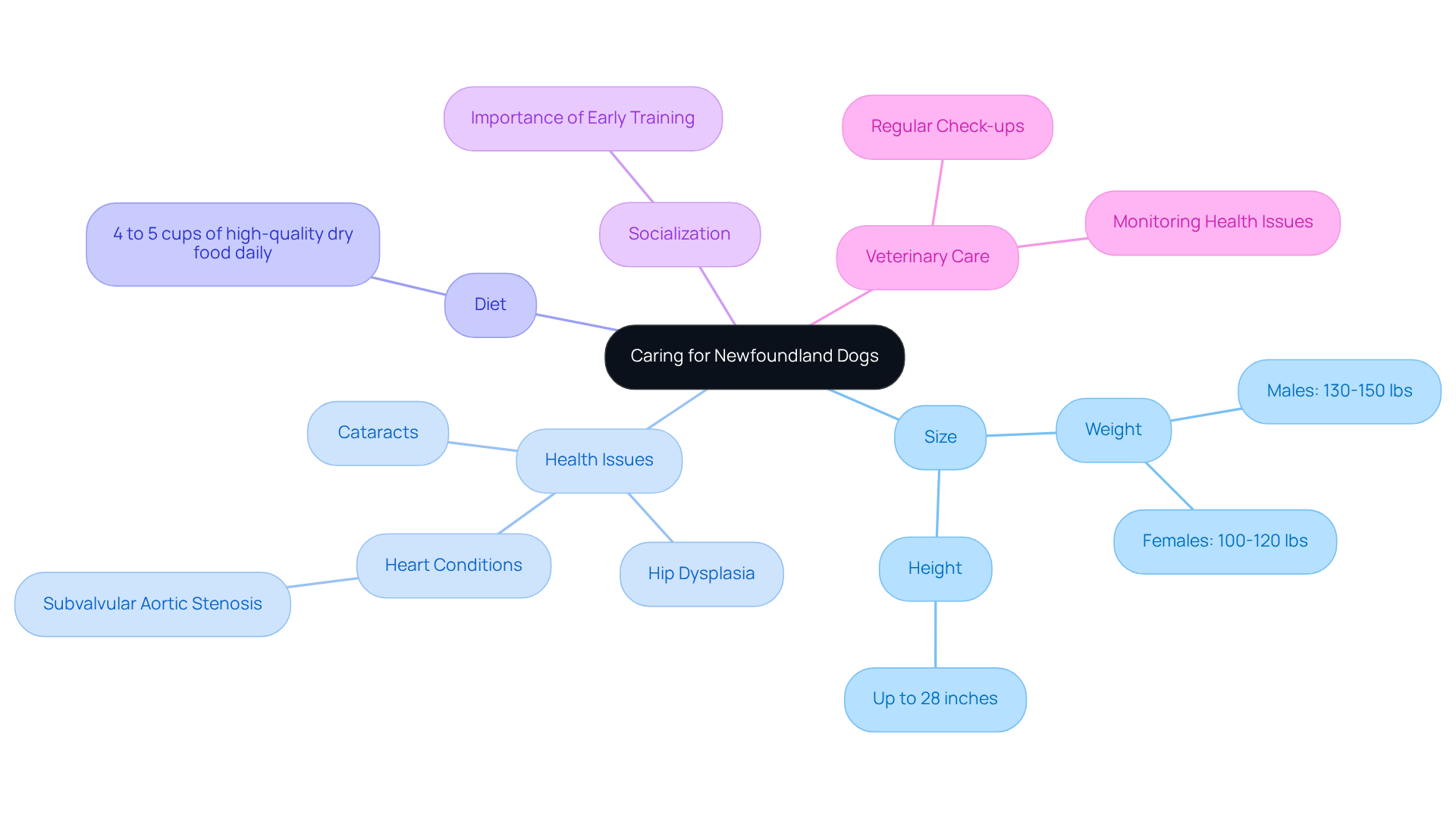
Pet Insurance: Protecting Your Newfoundland’s Health
Investing in pet insurance is truly essential for owners of this beloved breed, as it brings peace of mind by covering unforeseen veterinary costs that can arise unexpectedly. The typical monthly premium for pet insurance for a large dog in Canada is approximately $108, reflecting the specific medical considerations that come with caring for such a wonderful companion. It’s important to recognize that 1 in 10 Newfoundland parents face a vet cost exceeding $3,499.00 to treat their dogs, highlighting the potential financial burden that veterinary care can impose on families who cherish these gentle giants.
As you navigate this journey, it’s crucial to conduct thorough research, as policies can vary significantly. Finding options that align with your needs and budget is key to ensuring your furry friend receives the best care possible. For large breeds like Newfoundlands, considering plans that address breed-specific medical concerns—such as hip dysplasia and gastric torsion—is wise, particularly given the Newfoundland dog size, as these conditions can lead to substantial costs. Fetch offers a solution by covering breed-specific issues in one simple plan, making it easier for devoted owners to find suitable coverage for their pets.
Financial planning for veterinary care is also a vital aspect of responsible pet ownership; budgeting for potential medical issues can alleviate some of the financial pressure that may arise. By choosing the appropriate pet insurance and taking into account medical clearances from trustworthy breeders, you can ensure that your dog receives the essential care they deserve without jeopardizing your financial stability. Remember, you are not alone in this journey; many pet owners share your concerns and are committed to providing the best for their beloved companions.
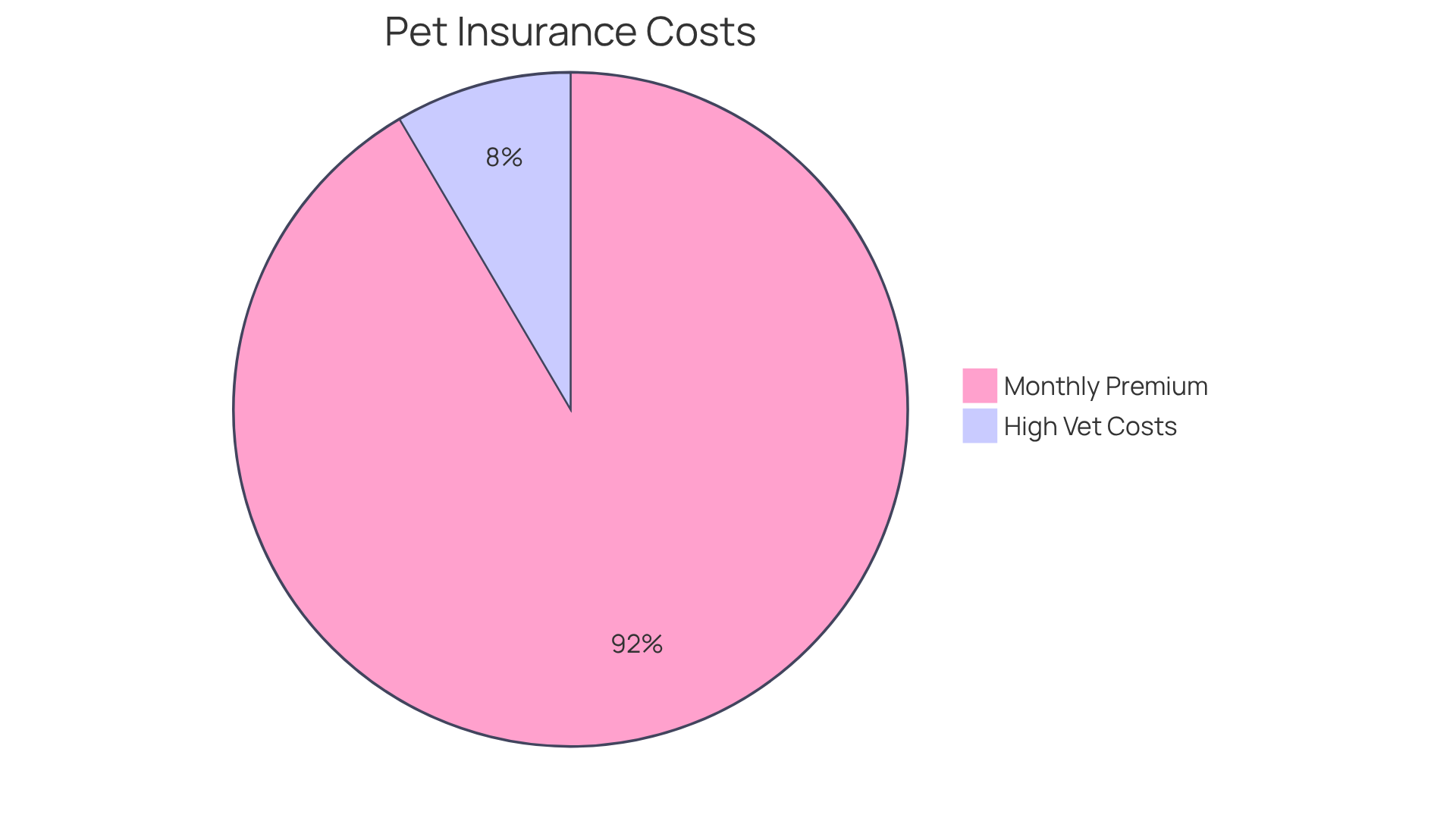
Engage with Growth: Monitoring Your Newfoundland’s Development
Consistently monitoring your dog’s growth and development is not just important; it’s essential for their overall well-being. As a loving pet owner, you may find that maintaining a detailed journal of their weight, height, and any behavioral changes can provide valuable insights. Engaging with your dog’s growth metrics allows you to make informed decisions regarding their diet, exercise, and veterinary care, ensuring they thrive as they mature.
Veterinarians often stress that monitoring growth is vital, especially for large breeds like the Newfoundland dog size, as it helps in recognizing potential wellness concerns early, such as malnutrition or developmental disorders. Effective tracking methods, like using a scale for weight and a measuring tape for height, can help you visualize their growth trajectory.
By staying proactive in monitoring these health metrics, you can support your Newfoundland dog’s size on the journey to a healthy adulthood. Why not start today by setting a schedule for regular weigh-ins and measurements? Your furry friend deserves to be on the right track, and your attentive care can make all the difference.
Conclusion
Understanding the intricacies of Newfoundland dog size is essential for any owner seeking to provide the best care for these gentle giants. With their impressive stature and unique needs, Newfoundlands require specialized attention throughout their lives, from their growth stages to health management. This article highlights the importance of recognizing their growth patterns, ensuring proper nutrition, and maintaining regular veterinary care to support their well-being.
Key insights include the Newfoundland’s growth timeline, which typically sees them reaching full size between 18 to 24 months, with males weighing between 130 to 150 pounds and females ranging from 100 to 120 pounds. As loving owners, it’s vital to be vigilant about health considerations, as this breed is prone to certain genetic issues. Preventive care and regular check-ups become crucial in safeguarding their health. Moreover, investing in pet insurance can provide peace of mind against unexpected veterinary costs, ensuring that these magnificent dogs receive the care they deserve without financial strain.
Ultimately, the journey of caring for a Newfoundland is one filled with joy, commitment, and responsibility. By staying informed and proactive about their health, growth, and specialized needs, owners can foster a nurturing environment that promotes a happy and fulfilling life for their beloved companions. Embrace the opportunity to engage with your Newfoundland’s development and well-being, as this not only enhances their quality of life but also strengthens the bond you share. Remember, your dedication to understanding and meeting their needs is what truly makes a difference in their lives.
